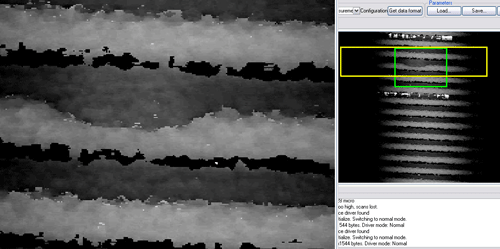Surface inspection involves the use of angled lighting and smart cameras to accurately detect surface flaws or features, in real time, on objects as they are produced. Machine vision surface inspection can be a challenge due to the nature and variety of the product or object. At EPIC, our vision team recommends the following steps to solve a wide variety of unique surface inspections cases:
1. Determine The Key Properties Of Your Product
The first step involves the product, part or element of the product or packaging that needs to be inspected. What it is made out of – glass, paper, plastic or metal –will have an impact of the types of tools used to examine it. If the object has multiple layers, or asymmetrical features, it may require more programming and a clever lighting solution to be successfully inspected.
2. Establish Clear Goals
Setting goals defines success for your vision system. What do you want inspected and what pass/fail rate is acceptable? What conditions are flexible and what metrics have to be met? Some goals include improving the accuracy (by a measurable amount) of an aspect of your manufacturing process, reducing the number of defects present in finished products, or improving the pass/fail rate of a current vision system. Whatever your goal – make sure it is measureable.

One project EPIC worked on involved finding tiny pieces of glass in a product designated for children. It was important to find all the glass because of the safety risk to the young end-users. Knowing about the flaw and the weight of the problem for the client’s customers, allowed our vision specialists to create a specialized system to solve this problem that took advantage of the special properties of the glass.
3. Call in the Vision Expert
How do you select the proper lighting to correctly light the defect? Which camera is best? For a camera to detect different aspects of a product – proper lighting, glare elimination, camera angle, proper programming – many things must be done correctly. Someone with years of vision system design, programming and integration experience can help make your project a success.
EPIC’s vision experts are comfortable figuring out all types of challenging vision inspections using the latest tools because they have been faced with hundreds of custom vision systems. For example: during a recent project, the EPIC vision team designed a system to detect a crushed bottle. To the eye it is easy to detect a crushed clear, opaque or frosted bottle with damage. For a camera, this can be harder, especially because clear objects are hard to detect with a camera lens. Without their extensive knowledge of lighting, programming and so on, this system could have taken a long time to get working correctly, or it might not have been successful at all.

Different inspections require specified camera selection. When conducting a 3D surface inspection of a timing belt, the camera of choice might be a High Speed Sick Ranger Camera – a high-speed camera developed to measure shape color of 3D objects. Using this camera, your inspection could enhance productivity by accurately measuring shape, contrast, and surface defects, to ensure product quality and production reliability. At other times, cameras like the Cognex Insight 5600-11 smart camera, can be used at different positions on the line to create the most accurate image.
5. Determine the Type of Lighting
It may take some testing in a vision lab to figure out the best lighting solution for your surface inspection application. It is most common to use low-angle backlighting to best illuminate the object being inspected. For an opaque object, it may be necessary to use glancing illumination, from an LED spot light, which has a sharp angle of incidence that enhances the object’s surface structure. A structured light, such as a laser, can be used to bring out surface features. If the object is translucent, like a clear bottle or glass, than it may require darkfield illumination using an LED Darkfield Ring Light. This will best show surface details like scratches, bubbling, cracks or tears.

Various defects require different types of programming, and most are not out-of-the-box solutions. For example, surface inspection may include the texture of an object. For that, a vision expert may select NI LabVIEW’s vision software tool to conduct texture analysis. However, if you were interested in finding a certain defect on a products surface, the smart camera may be programed using Insight Explorer 4.7.0 to communicate pass/fail outputs. In this case, the camera must be trained on the various heights, shapes and textures in order to have the most accurate pass/fail rate.
7. Install, Integrate and Train
Installation often requires mechanical brackets or hardware, integration of the new vision system with existing line equipment, and training of your line personnel. While these steps are easy to list out, they can be harder to complete. Further programming may be needed to properly integrate the vision system with existing plant equipment or resource management programs. Mechanical design and parts fabrication may be needed to position the vision system on the production line. This is another area where we believe a vision expert provides invaluable help.
——————————
EPIC is a machine vision system integrator located in St. Louis, MO that specializes in custom part and product inspection. To learn more about turnkey vision solutions, visit our Machine Vision website or contact an engineer today.
